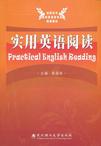实用英语阅读
出版时间:2010-8 出版社:武汉理工大学出版社 作者:吴翠华 编 页数:205 字数:337000
前言
我国正处于经济全面对外开放的形势下,外语学习的热潮高涨。商务英语是我国职业教育的重要组成部分,其教学目标重在培养学生实际使用英语从事涉外商务活动的能力,也即能够处理国际商务业务的“实用英语”。《实用英语阅读》正是为此目的而策划、编写的商务英语系列教材之一。本书阅读材料均选自当今世界著名英语报刊、网站和英美经济贸易专业书籍,并对这些文章精心编排注释,配备了大量具有针对性的练习,使读者掌握报刊文摘的特点,提高阅读和分析能力,从不同侧面了解国际商务知识,追踪当今世界经贸领域的最新动态,开阔视野。 在选材方面,首先考虑到入选文章涉及的主题要广,尽量涵盖涉外经贸最重要的领域,如国际贸易、金融、营销等,使读者了解国际商务的最新变化与发展。其次,选材力求涵盖各类文体,如新闻报道、综述、分析评论及国际组织编写的年度报告等。此外,选材也充分注意到文章内容的实效性及语言质量,以最典型的商务语言传递最新的商务信息和热点问题。 本书共14单元,每单元包括阅读技巧和4篇文章(两篇课文、一篇快速阅读、一篇实用阅读),涉及商务礼仪、国际贸易、金融、电子商务、营销、中国经济、跨国公司、跨文化交际、产品与广告、职业生涯规划等热门话题,知识性、趣味性强。阅读技巧部分循序渐进地介绍了猜词、识别主题句、分析段落展开模式、长句解析、扫读、略读、推断等常用阅读技巧;四篇文章紧扣单元主题,难度适中。为帮助读者更好地理解和掌握课文,使所学的专业知识和语言技能具有更强的实践性,在课文之后设计了形式多样的练习,如回答问题、选词填空、词义搭配、英汉互译及根据文章内容判断句子正误等;电子课件中提供了练习的答案。
内容概要
这本《实用英语阅读》由吴翠华主编,书中的材料均选自著名英语报刊、网站及英美经济贸易的专业书籍,材料新颖,语言规范生动,信息量大,实用性强。全书共14单元,每单元包括阅读技巧和4篇文章(两篇课文、一篇快速阅读、一篇实用阅读),涉及商务礼仪、国际贸易、电子商务、金融、营销、中国经济、公司文化、产品与广告、职业生涯规划等热门话题,知识性、趣味性强。阅读技巧部分循序渐进地介绍了猜词、识别主题句、分析段落展开模式、长句解析、扫读、略读、推断等常用阅读技巧;四篇文章紧扣单元主题,难度适中,致力于提高学生的阅读和分析能力,同时了解国际商务知识,追踪世界经贸领域的最新动态,开阔视野。
《实用英语阅读》适用于高职高专商务英语专业的学生,也适用于对外经贸、财政金融等专业的学生,还可供国际商务从业人员参考使用。
书籍目录
Unit 1 Effective Communication
Unit 2 Business Etiquette
Unit 3 International Trade
Unit 4 Business Online
Unit 5 Products & Price
Unit 6 Customer Service
Unit 7 Advertising & Marketing
Unit 8 Business Culture
Unit 9 Famous Corporatio
Unit 10 International Finance
Unit 11 Career Development
Unit 12 China's Economy
Unit 13 Globalization
Unit 14 The Changing World and Development
参考文献
章节摘录
1. Facial Expressions Facial expressions are responsible for a huge proportion of nonverbal communication.Consider how much information can be conveyed with a smile or a frown. While nonverbalcommunication and behavior can vary dramatically between cultures, the facial expressionsfor happiness, sadness, anger, and fear are similar throughout the world. 2. Gestures Deliberate movements and signals are an important way to communicate meaningwithout words. Common gestures include waving, pointing, and using fingers to indicatenumber amounts. Other gestures are arbitrary and related to culture. 3. Paralinguisties Paralinguistics refers to vocal communication that is separate from actual language.This includes factors such as tone of voice, loudness, inflection, and pitch. Consider thepowerful effect that tone of voice can have on the meaning of a sentence. When said in astrong tone of voice, listeners might interpret approval and enthusiasm. The same wordssaid in a hesitant tone of voice might convey disapproval and a lack of interest. 4. Body Language and Posture Posture and movement can also convey a great deal of information. Research on bodylanguage has grown significantly since the 1970s, but popular media have focused on theover-interpretation of defensive postures, arm-crossing, and leg-crossing, especially afterthe publication of Julius Fasts book Body Language. While these nonverbal behaviorscan indicate feelings and attitudes, research suggests that body language is far more subtleand less definitive, that previously believed. 5. Proxemics People often refer to their need for "personal space", which is also an important type of nonverbal communication. The amount of distance we need and the amount of space we perceive as belonging to us is influenced by a number of factors including social norms, sit- uational factors, personality characteristics, and level of familiarity. For example, the a- mount of personal space needed when having a casual conversation with another person u- sually varies between 18 inches to 4 feet. On the other hand, the personal distance needed when speaking to a crowd of people is around 10 to 12 feet.
图书封面
评论、评分、阅读与下载
用户评论 (总计0条)
相关图书
- 发电厂及变电站电气设备
- 零起点轻松说法语
- 零起点轻松说日语
- 商标合同判例(第17辑)
- 商标与域名判例(第18辑)
- 外观设计确权判例(第13辑)
- 和老子学养生-老子的健康传播智慧
- 和老子学传播-老子的沟通智慧
- 基督宗教研究(第13辑)
- 天主教研究论辑
- 爱与讽刺
- 上海及周边省区公路网地图集
- 江苏及周边省区公路网地图集-苏沪浙鲁2011
- 浙江及周边省区公路网地图集-浙沪苏皖闽赣2011
- 数码风景摄影新手必学100招
- 超现实主义宣言
- 抗战初期中共中央长江局
- 猫武士荒野手册4:族群的战争
- 猫武士外传2:蓝星的预言
- 文化与人生
- 英语世界中国古典文学之傳播
- 世界大地理
- 猫武士外传3:天族外传
- 中华大地理
- 雅典政制
